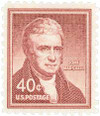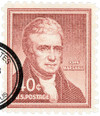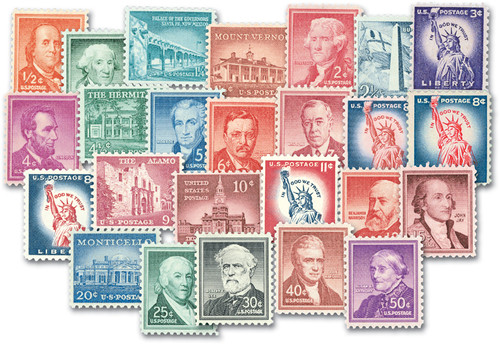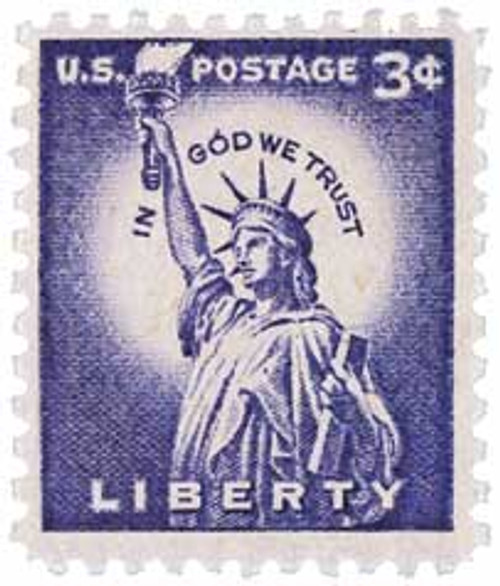
1955 Liberty Series,40¢ John Marshall
# 1050 - 1955 Liberty Series - 40¢ John Marshall
MSRP:
Was:
Now:
$0.35 - $450.00
(You save
)
Write a Review

Write a Review

1050 - 1955 Liberty Series - 40¢ John Marshall
| Image | Condition | Price | Qty | |
|---|---|---|---|---|

|
Classic First Day Cover
ⓘ
Ships in 1-3 business days.
Ships in 1-3 business days.
$ 4.00
|
$ 4.00 |
|
0
|

|
First Day Cover Plate Block
ⓘ
Ships in 1-3 business days.
Ships in 1-3 business days.
$ 4.50
|
$ 4.50 |
|
1
|

|
Mint Plate Block
ⓘ
Ships in 1-3 business days.
Ships in 1-3 business days.
$ 18.75
|
$ 18.75 |
|
2
|

|
Mint Stamp(s)
ⓘ
Ships in 1-3 business days.
Ships in 1-3 business days.
$ 3.75
|
$ 3.75 |
|
3
|

|
Mint Sheet(s)
ⓘ
Usually ships within 30 days.
Usually ships within 30 days.
$ 450.00
|
$ 450.00 |
|
4
|

|
Used Single Stamp(s)
ⓘ
Ships in 1-3 business days.
Ships in 1-3 business days.
$ 0.35
|
$ 0.35 |
|
5
|

|
Unused Stamp(s)
small flaws
ⓘ
Ships in 1-3 business days.
Ships in 1-3 business days.
Free with 510 Points
$ 2.25
|
$ 2.25 |
|
6
|
Mounts - Click Here
| Mount | Price | Qty |
|---|
U.S. #1050
40¢ John Marshall
Liberty Series
40¢ John Marshall
Liberty Series
Issue Date: September 24, 1955
City: Washington, DC
Printing Method: Rotary press dry printing
Perforations: 11 x 10.5
Color: Brown red
City: Washington, DC
Printing Method: Rotary press dry printing
Perforations: 11 x 10.5
Color: Brown red
John Marshall began his 34-year career as Chief Justice of the Supreme Court on February 4, 1801.

U.S. #1050
40¢ John Marshall
Liberty Series
40¢ John Marshall
Liberty Series
Issue Date: September 24, 1955
City: Washington, DC
Printing Method: Rotary press dry printing
Perforations: 11 x 10.5
Color: Brown red
City: Washington, DC
Printing Method: Rotary press dry printing
Perforations: 11 x 10.5
Color: Brown red
John Marshall began his 34-year career as Chief Justice of the Supreme Court on February 4, 1801.
!












